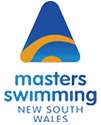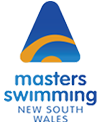This is the third in a series of columns designed to help you swim at your best at meets, or just appreciate your swimming experience more.
In my last column ‘Types of Training’ under the banner of ‘Quality’ training I mentioned race pace training and the fact that obviously any swimmer needs to do at least some training at speeds at least or close to those of their race distances. In this column I would like to discuss the idea of race pace training and suggest a possible subtle, but to my mind significant variation in approach to this type of training.
From the outset let me say that much of what I will say will overlap with the principles of, and training for, proper pace judgement of races (of 100 metres and longer), the most crucial factor in a swimmer swimming as fast as they are capable, which I intend to cover in more detail in a later blog.
Let’s begin with an example to illustrate my point: Take Masters swimmer X who swims 2.10 for a 200 Freestyle. X might be a competent 25 year old male, a fantastic 50 year-old male, or a really fast 35 year-old woman, or whatever; it doesn’t matter. Because X is smart and swims his/her races intelligently, when he/she swims 2.10, he/she splits, for each 50: 31, 33, 33, and 33, which allowing for the dive means X is swimming at pretty much even speed for the entire distance, which requires gradually increasing effort, and will most likely, but perhaps not always, require a gradually increasing stroke rate.
Now to train for the 200 (let’s say it is X’s main event), coaches (and swimmers) would say X should do sets (of say 50s) at a speed of about 32.5 seconds per 50, X’s average speed over the distance, and they are probably right, as such training would have considerable relevance.
But even though that is X’s average speed, how that speed felt to X throughout the race, and how it was achieved, almost certainly varied considerably for X. I’m sure the 31-second first 50 (roughly the same speed as the other 50s allowing for the dive) felt VERY different (i.e much easier) to the last 50, and correspondingly, but less dramatically, different to the second and third 50s.
Would it not therefore be more appropriate for X to practise the feeling of the first 50, 100, 150 of the race (and sometimes the whole 200), irrespective of how fast that is in training when X is not in the same physical or mental state as he/she will be in a race? A swimmer’s physiology and brain doesn’t know how fast the swimmer is going, all they can ‘know’ is whether or not they are performing in the same way as they do in a race. So isn’t rehearsing the same physiological and psychological function (‘feel’ in general) more relevant than X slavishly trying to swim 32+s even if this requires a level of effort and a stroke rate very different (except perhaps for the last 50) to those actually used in the race? Maybe on a good day in training this race ‘feel’ will result in something very close to race pace, but if X is a swimmer who responds well to the competitive environment, most days it won’t. Way back when I could swim, the first 50 of my best 200s was 26, which felt incredibly smooth and easy, yet to do a 26 in training mostly would have required a near maximal-effort sprint. Mind you, given we all trained like distance swimmers back then and spent long periods fatigued, that is hardly surprising. Even my average speed of around 28 would have often required a level of effort and stroke rate that bore little relation to those executed in my race.
On a related point, as directed by their coaches, many swimmers these days do a lot of training practicing “back-end speed”. For starters I don’t know how a swimmer can properly practice their back-end speed unless it follows the front end done at the same speed/feel as when they race. I believe the biggest factor in a swimmer having sufficient back-end speed is ensuring the front end isn’t TOO BLOODY FAST!
So what I advocate, and what I would spend a lot of time doing if I was still coaching at the elite level, is swimmers doing sets that practice how they need to FEEL at the 50 (or even 25, 50 and 75) mark of 100 metre races, 50/100/150 mark of 200 metre races and 100/200/300 of 400 metre races. I have devised a range of sets that facilitate this. One example is:
12 (or 8 or 4 or 16; some multiple of four depending on one’s ability and capacity) x 100 on a time cycle of, say, 2 minutes 30 seconds or any cycle that is going to offer sufficient time for full or near full recovery. Each set of four should be done as follows: 1 as 25 race ‘feel’ 75 easy; 1 as 50 race feel, 50 easy; 1 as 75 race feel, 25 easy; and one as a race feel 100; with the race feel section done in the race stroke and the easy part done in any stroke.
One could do a version of this set over 200s, segmenting each set of four by 50 instead of 25; or even in a set of 400s (tough!) with 100 metre segments. These sets can be done with or without a dive, and to more accurately duplicate the race situation, with ‘feet on the wall’ timing at the end of any race feel section where a turn would normally be done.
Of course the times achieved for each race feel section is relevant information, and one would hope it isn’t a whole lot slower than that the swimmer would hope to achieve in a race, but mostly it will be slower, especially for a ‘less-fit’ Masters swimmer. The most relevant aspect of this training is practising the feel the swimmer needs to have at each point to ensure they have sufficient energy (or ‘gears’) left for even speed and therefore optimal performance. What time that feel equates to (both in training and in any race) will vary according to a swimmer’s state of preparation, how they are on any given day, and how well they respond to the competitive situation. But it should always FEEL the same.
Next time I will give you a short appraisal of ultra-short race pace training (‘USRPT’). In the meantime, get in and swim – swim for (your) life!
Mark Morgan

